Posted : July 6, 2021
Our blog is chock full of great ideas for fun things to see and do in York Durham and Headwaters. We are always adding new content and updating old posts, but sometimes you might stumble upon something from our vault. If this article has inspired you to hit the road, be sure to double-check that the featured stops in this post are still welcoming visitors.
Just outside of the bustling downtown core of the City of Oshawa, nestled within a stately stone century wall, sits an oasis of peace. One step through the gates of Parkwood Estate, the former home of auto baron Robert S. McLaughlin and his family, and you might as well be stepping back through time. Today, the house is a national historic site that is open to the public, where the artifacts of the McLaughlin family are lovingly preserved and interpreted to present a picture of what life was like here over a hundred years ago. Surrounding this awe-inspiring home is a network of gardens which are, in their own right, national historic gardens. Each plant, tree, pathway and structure holds historic significance that anyone who wishes to wander can enjoy free of charge. Welcome to the gardens of Parkwood Estate.
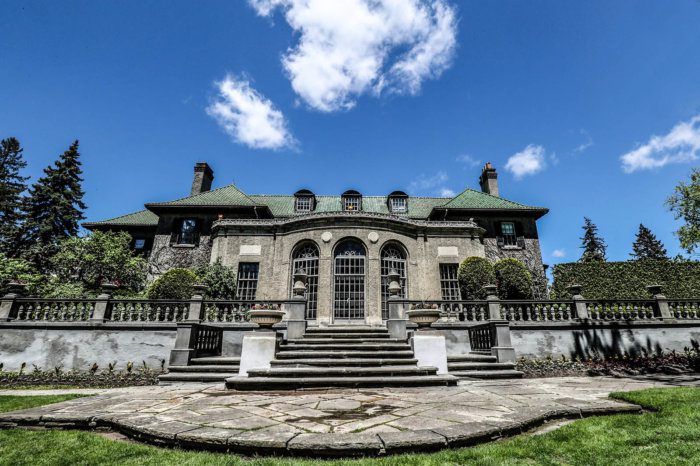
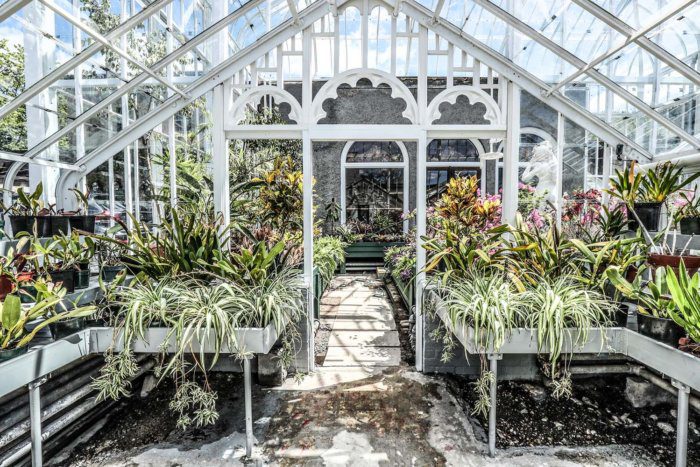
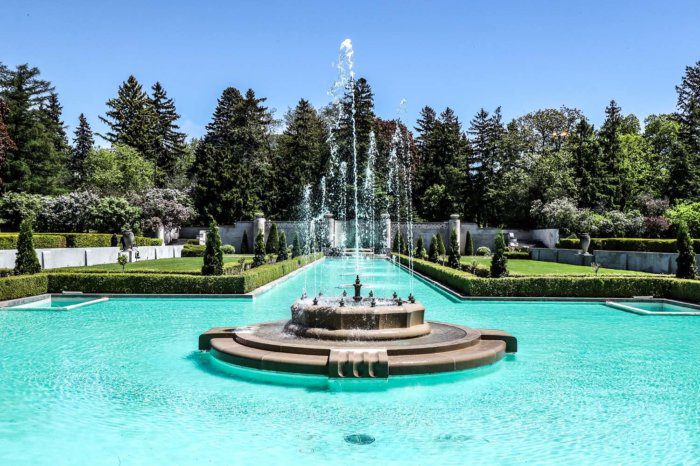
“The theory of the grounds and the gardens is that they are rooms,” says Laura Mountjoy, executive director for Parkwood Estate. “It is kind of like a house, where you wander from one room to another. As you wander the grounds, you find different purposes, different subtleties, and neat little surprises.” The philosophy and landscape architecture were initiated by Dunington-Grubb, a husband-and-wife company who were well known for their work on large estate homes in Toronto, and who founded Sheridan Nurseries.
Interestingly, the gardens at Parkwood predate the McLaughlin legacy. Originally, the property was owned by a local miller who began the process of creating the gardens in 1850. The grounds were further developed by the estate’s next owner, who added athletic fields and stands to the property. Somewhere in this timeframe the property became known as Prospect Park, though no one is quite sure where the name came from. In 1902, Prospect Park was purchased by a gentleman named E.S. Edmondson, who went on to serve as the mayor of Oshawa, and who converted it into a public park for the community. It was in 1915 that R.S. McLaughlin, founder of General Motors Canada, and his wife Adelaide purchased Prospect Park which would later be renamed Parkwood. The construction of their home on the property took two years, and once it was completed in 1917, the grounds and the gardens began to evolve along with the new family that enjoyed them.
Adding to the grounds’ illustrious pedigree, 13 different statues can be found on the grounds which range in size, and which were each created by one of two famous Canadian Sculptors—Frances Loring and Florence Wyle. “They were friends of one of the McLaughlin daughters,” Laura explains. “Some of these statues are in obvious places. There’s Hebe, for example, in our sunken gardens, who is quite the stately and obvious figure. Then there are figures like the Lady in the Shower, which is a tiny little statue that is under a bush near a water feature. It’s a neat discovery if you wander upon it. You will find these statues all over the property—everywhere from the Italian Garden to the Sunken Garden to the front pergola. It’s a fun, cool piece to Parkwood.”
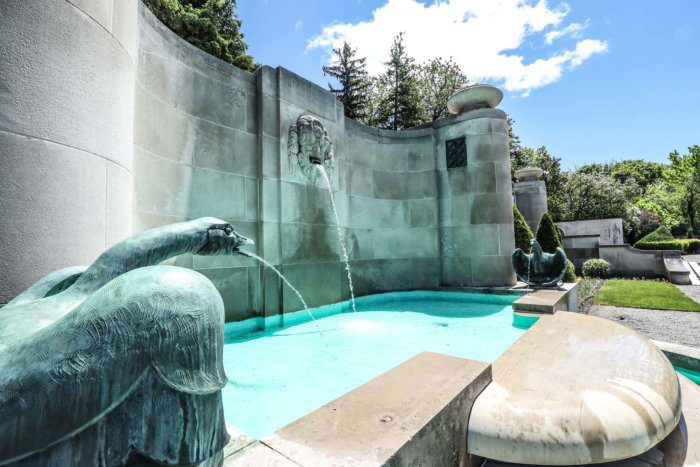
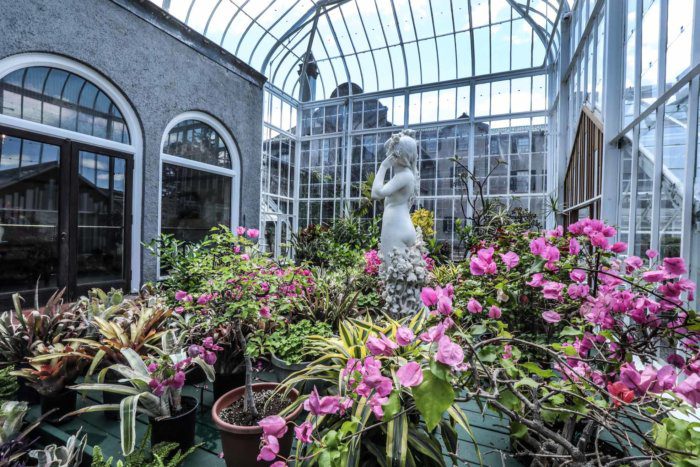
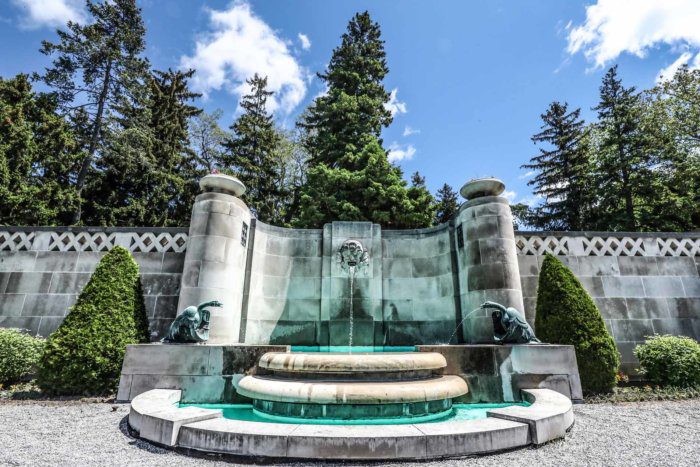
There are many fun, cool stories surrounding the evolution of Parkwood’s gardens and grounds. For example, prior to about 1929 there was no sun room in the house. The area where the sun room now sits was originally an open-air terrace. The addition of this enclosed area provided the McLaughlin family with an indoor/outdoor space in which to entertain. Laura says, “Back in the day, there was no air conditioning in the house, so when you look at the sun room from the south lawn—imagine that you can see some green and white awnings and shutters—the combination of those features is how the family utilized air flow like old-fashioned air conditioning to keep the house cool.”
Another fascinating story about the grounds that come from the estate’s oral histories is that, when the McLaughlins were in residence, the grounds crew had to cut the lawns manually instead of using an electric or gas lawn mower so as not to disturb the family with the electrical noise. To help, there were originally cows on the property that would help keep the grass trimmed.
Arguably the most interesting thing about the Parkwood gardens is that, much like the house itself, everything is considered an artifact because it is original to the family. “We run the gardens like we run the house,” Laura explains. “All of our trees and shrubs are catalogued. They are considered artifacts because many of them predate even the McLaughlin family on the property. We have a landscape architectural plan which is what we use to guide us through different processes on the gardens. For example, if a tree dies, is it replaced with a tree that is the same species and size. That landscape conservation plan was done very carefully looking at old literature and plans that originally helped design the gardens.”
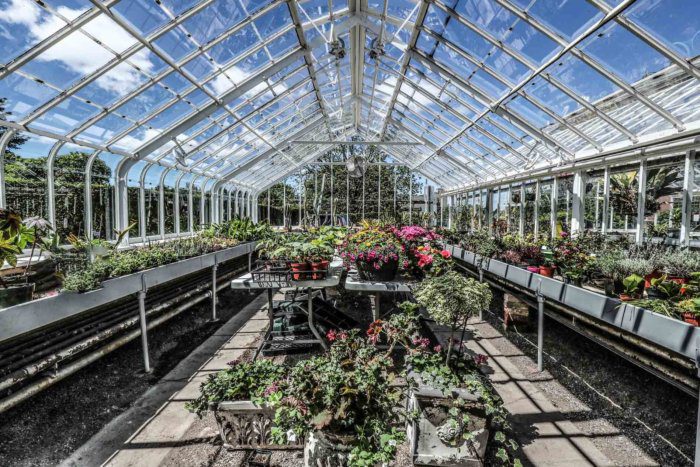
“Our goal is to always ensure the authenticity of the gardens and that the historical intent of the gardens remains,” she adds. “What you see everywhere is basically what you would have seen when you were here 100 years ago.”
But what does it take to maintain such a vast artifact as the Parkwood historical gardens? “It takes more than we have,” Laura admits with chagrin. “We ideally have one full-time grounds foreman who works all year long. In addition to that, we have two grounds people that work from April to November. And then we are fortunate enough to be able to hire students in the summer when the grounds are the busiest to do our planting and gardening.” This is vastly different from when Parkwood was a home. Back then, there would have been between 15 and 20 grounds people whose sole job it was to be outside. “There was one gentleman whose job it was to rake those gravel paths everyday to make sure that those stones were neatly contained and off the grass,” Laura states. “We clearly don’t have that anymore.”
There is so much more that Laura and her team wish they could do, but they are grateful for the donations the estate receives to help fund the upkeep of the grounds, and for the host of volunteers that lend their time to keeping Parkwood beautiful and vibrant. From gardeners to greenhouse growers, Laura considers Parkwood fortunate to have such a wonderful crew of volunteers on board.
As we mentioned, Parkwood’s grounds are open to the public and are free of charge. You may not expect this of most historic houses, but Colonel Sam was a unique man who cared about the community of Oshawa—as evidenced by the many institutions which bear his name. Today, anyone can visit and spend time at Parkwood in the shade of a century-old silver maple, or soak up the sun in the Sundial Garden. “We really believe that the grounds are a place for people, a place our community can come and gather to enjoy,” Laura says. “For me, I didn’t really realize how significant and important our grounds were to the community until COVID happened. We heard from our community members how much they missed coming and walking the grounds when we were closed due to provincial orders. We heard from people at the [nearby Lakeridge Health] hospital how much they missed coming over, whether they were hospital staff taking a break to come and walk the grounds, or whether they were loved ones dropping off a cancer patient for treatment, or whether they were someone who had a loved one in the hospital for a long stay and needed a break. We did know some of that beforehand, but during COVID we saw how important it was.”
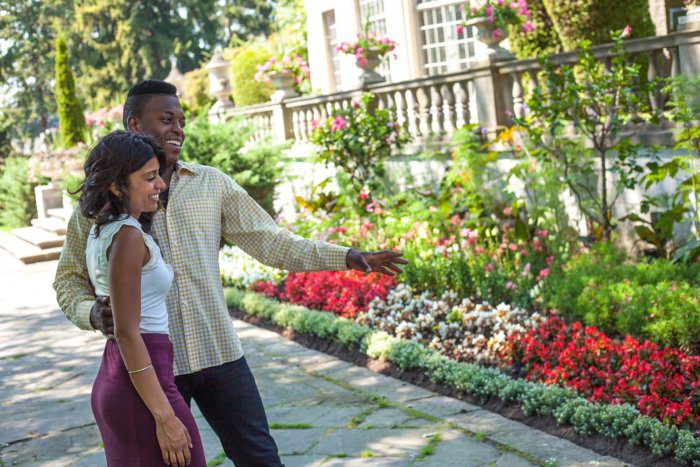
She adds, “There is something soothing and relaxing about just wandering those grounds, even if it’s just for 20 minutes, it feels like you’ve had an entire recharge. We love that our community feels that and we want them to come here and feel that.”
Parkwood Estate
270 Simcoe St. N., Oshawa
Story by Katherine Ryalen